Dorking has always been at the forefront of leisure cycling. In 1868 iron-monger Lewis Saubergue was one of the first men in England to buy a foot-propelled velocipede ‘bone-shaker’. Shortly afterwards nurseryman Arthur Chalcraft was a pioneer rider of the Ordinary pedal-propelled bicycle known as the ‘penny farthing’. And the canal builder Sir Arthur ‘Irrigation’ Cotton was an early tricycle rider. But early bicycles were expensive.
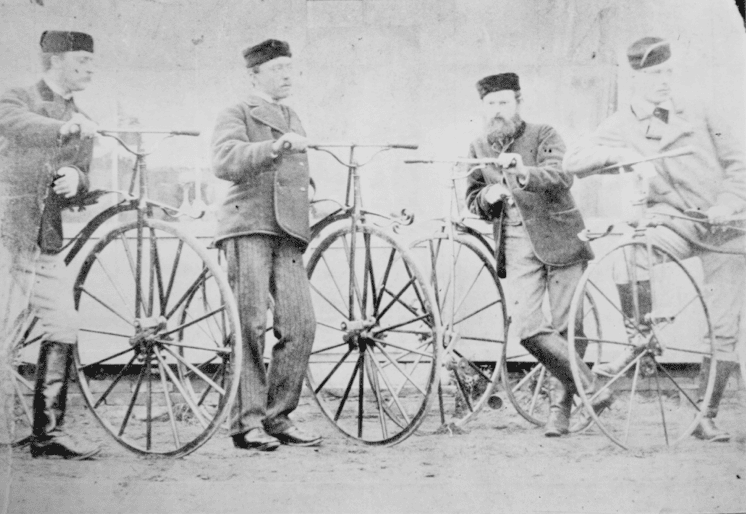
Lewis Saubergue toured Germany by velocipede in 1870. Everywhere he and his companions went they were followed by curious crowds.
The penny farthing’s large front wheel enabled high speeds, but the height was limited by the leg measurement of the rider. Arthur Chalcraft had to have wooden blocks attached to his pedals as his legs were too short to reach the pedals. Serious accidents were common so riding was a young man’s sport.
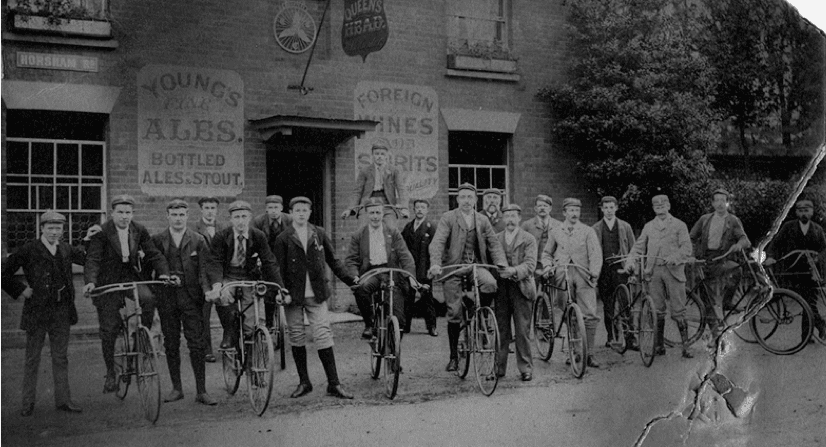
A cycle party outside the Queen’s Head, Westcott. From 1875 the Cyclists’ Touring Club published route maps recommending Leith Hill, Box Hill and Friday Street as destinations and advertising hotels catering to the cycle trade. Not all inns were welcoming to cyclists: in 1899, the Burford Bridge Hotel attempted to charge Capel Cycling Club 3d for each cycle left outside. The cyclists went to the Star and Garter instead.
The development of the cheaper ‘safety’ bicycle saw a bicycle boom. By the 1890s there were a million and a half cyclists in Britain and hundreds of cycle touring clubs. Dorking became a popular destination. The town ‘could not be surpassed’, wrote the Daily Telegraph, ‘as a centre for excursions, for its beautiful setting and excellent roads’.
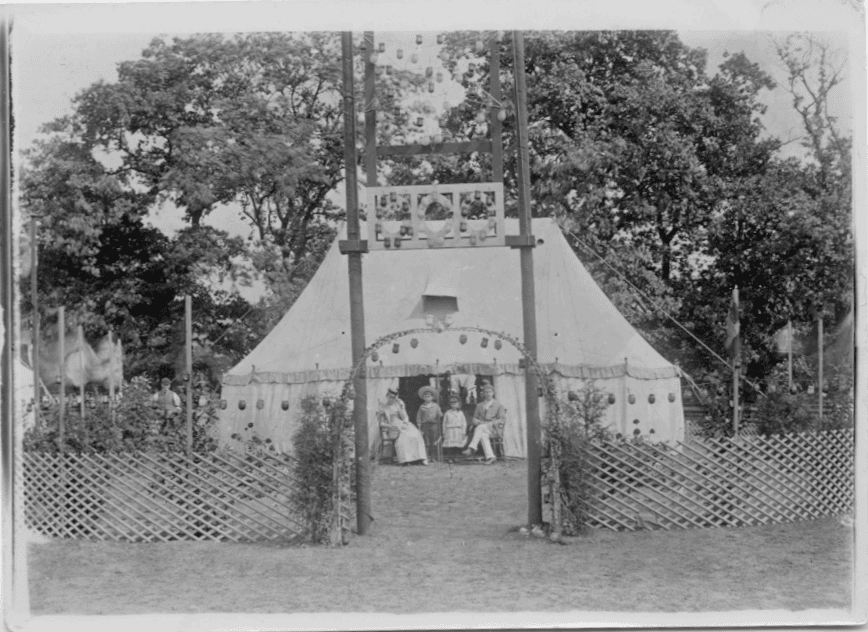
In 1891, 1892, 1893 and 1896 the town was the setting for two-week festivals of cycling as summer camps at Poultry Farm, (south of St Paul’s Road), attracted thousands from all over the south-east to cycle on Box Hill and Ranmore. Clubs pitched sumptuously furnished marquees and bell sleeping tents; other tents housed barbers, machine repairers, bars, and food stalls. In August 1896 2,000 campers and season ticket holders, and over 6,000 day visitors, enjoyed fireworks, dancing, singing, cycle racing, and ‘athletic’ and ‘burlesque’ sports. Many without tickets had to be turned away and the highlight was a torch-lit fancy procession through the town in ‘grotesque’ fancy dress.
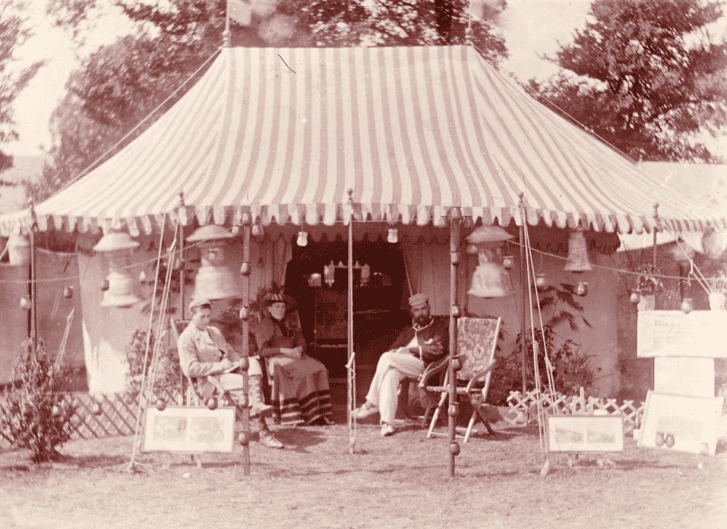
Decorated in pink and pale blue in 1894, the Dorking Cycling Club was lit with fairy lights and contained portraits of club officials, views of the neighbourhood and painted scenery. The Hammersmith CC tent was lit with electricity powered by traction engine.
Each of the tents were named (Dorking’s was The Marquis of Granby) and the clubs took turns to host receptions in their marquees.
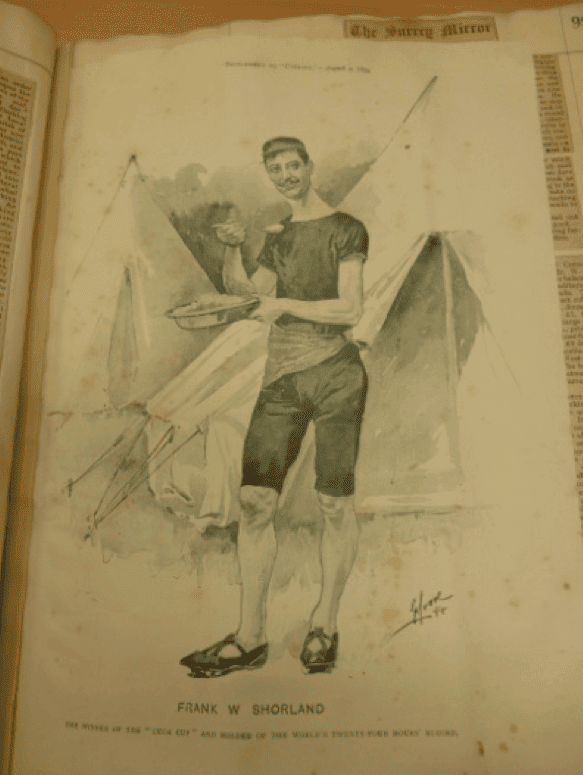
A depiction in the press of cycle camp participant Frank Shorland outside his tent. Shorland was one of the stars of the cycle racing world in the 1890’s.
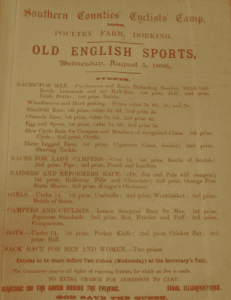
The programme of events for one day at the cycling camp of 1896. Prizes in the sports were awarded by Sir Trevor Lawrence of Burford Lodge, president of Dorking Cycling Club. In 1896 Lord Ashcombe hosted a reception for the cyclists at Denbies.
The original Dorking Cycling Club was formed in the 1880s. By 1892 it had 100 members. By the 1890s Dorking was home to several cycling clubs.
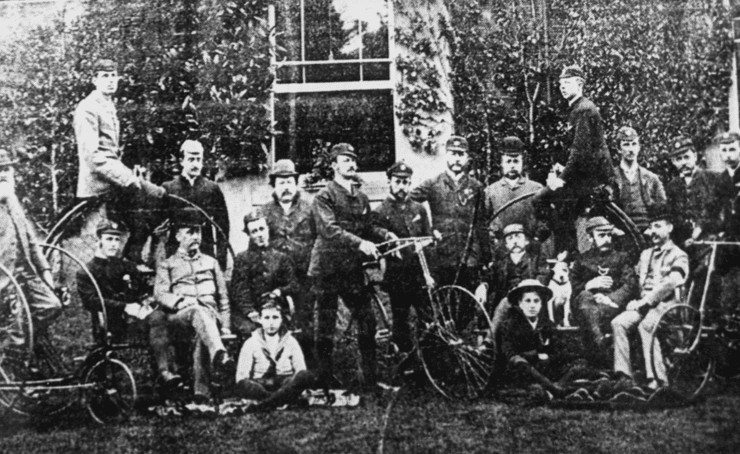
Dorking Cycling Club in about 1885 at Mr Attlee’s house on Rose Hill. From 1887 the club held twice weekly outings from its headquarters at the Wheatsheaf Inn on the High Street. Dorking was also home to the Dorking Temperance Cycling Club, Betchworth Cycling Club, the Dorking Workingmen’s Cycling Club (which met on Wednesday afternoons as it was half day closing), the Junior Conservative Cycling Club, a branch of the Good Templars’ Cycling Club and the Old Paulonians’ Cycling Club.
The popularity of cycling declined in the UK after the Second World War as car ownership increased. The modern Dorking Cycling Club was established in 2011 when Graham Baker posted fliers announcing a Sunday morning ride. It now has 250 members, a women’s section, the LycraBirds, and a youth section, the Dorking Raiders. It is twinned with French club, CC Vence.
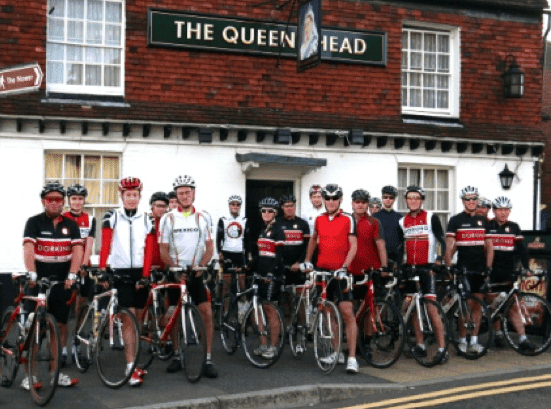
The club provides a safe, social, friendly and inclusive environment for cyclists of all levels of ability, and develops, encourages and inspires local cycling talent in a town uniquely positioned between the internationally known and iconic climbs of Box Hill and Leith Hill.
Next : A Social Revolution

